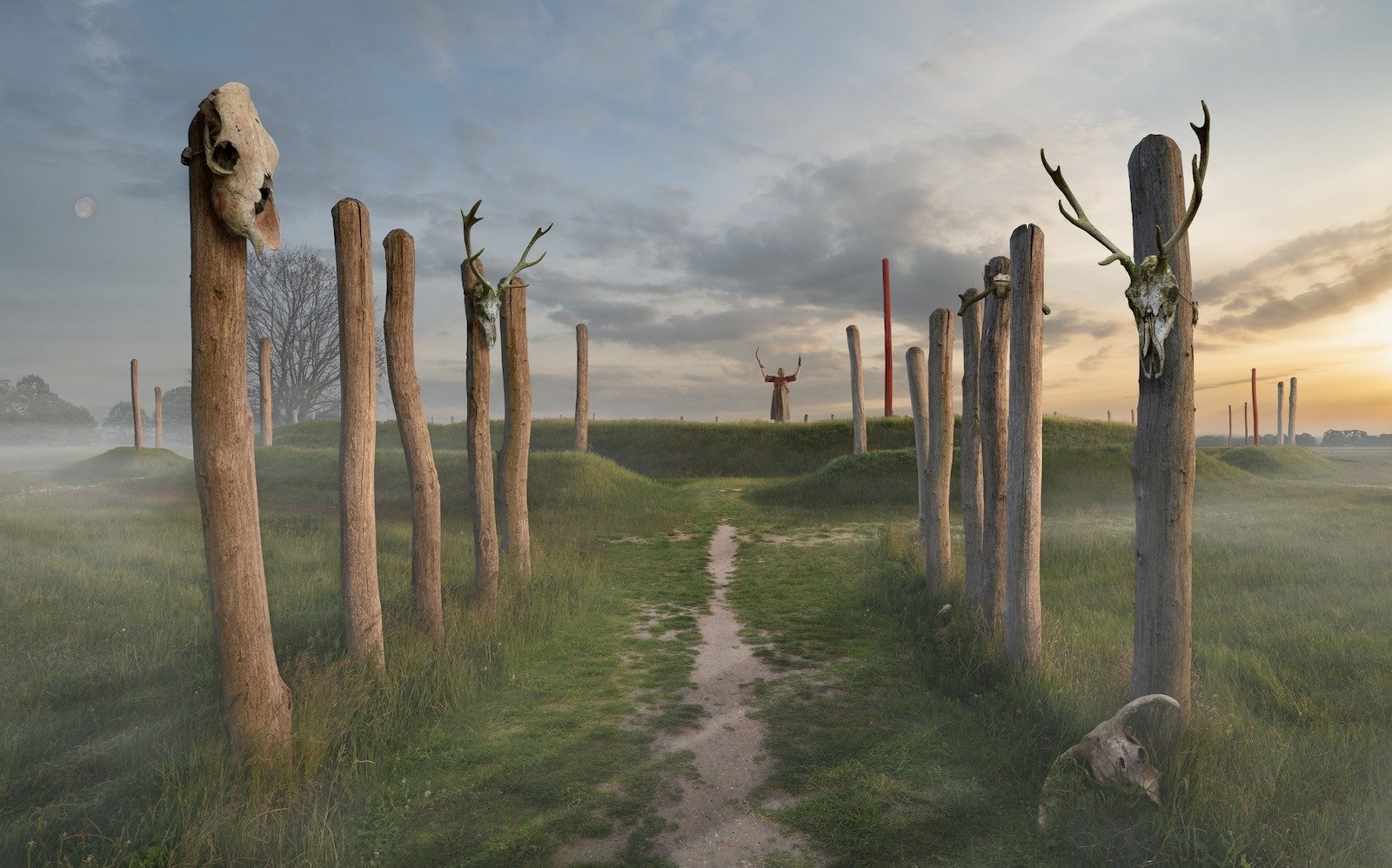
Archaeologists in the central Dutch city of Tiel have uncovered a 4,000-year-old sanctuary, four football fields in size, nicknamed “the Stonehenge of the Netherlands.” The results of the dig were made public on Wednesday on the city’s Facebook page.
The site included several burial mounds, the largest of which had a diameter of over 65 feet and also served as a kind of solar calendar. It contained the remains of about 60 men, women, and children, according to the Guardian. The site was used for for burials for more than 800 years, archaeologists say.
A shallow ditch with several passages surrounds the largest mound, and on days including the summer and winter solstice, the sun shone directly through those passages.
Courtesy the city of Tiel, via Facebook.
“This hill reminded one of Stonehenge, the well-known mysterious prehistoric monument in Britain, where this phenomenon also occurs,” reported NOS, the national broadcasting service.
Valuable objects like a bronze spearhead, as well as human skulls and animal skeletons, were found along the site’s passages, and a glass bead was discovered in the oldest part of the burial field. The city says that it is the oldest glass bead found in the Netherlands and that it originally came from Mesopotamia.
“This bead travelled a distance of some 5,000 kilometers four millennia ago,” said the project’s chief researcher, Cristian van der Linde of BAAC, a Dutch private company involved in archaeology, architectural and cultural history.
“Glass was not made here, so the bead must have been a spectacular item as for people then, it was an unknown material,” Stijn Arnoldussen, a professor at the University of Groningen, told NOS.
Courtesy the city of Tiel, via Facebook.
The dig at Tiel began at an industrial park in 2017, according to municipal archaeologist Ilse Schuuring. The city, which has a population of about 42,000, is about 30 miles southeast of Utrecht.
Some of the discoveries from the site will go to the Flipje & Streekmuseum in Tiel and some to the National Museum of Antiquities in Leiden, said alderman Frank Groen on Facebook. A scientific paper will be published in the fall.
More Trending Stories: